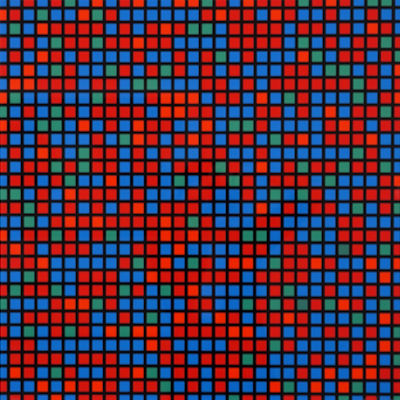
Details
Artist
Styles
Screenprint in colors on wove paper - Signed and numbered in pencil // Babel 3 by Victor Vasarely is a 1978 limited edition screen-print on wove paper. The composition presents a complex geometric labyrinth of colorful cubes arranged within a hexagonal frame. The vibrant palette includes a wide range of colors—reds, greens, blues, yellows—creating a three-dimensional illusion of interlocking paths. The piece exemplifies Vasarely's exploration of optical art, where the arrangement of shapes and colors plays with the viewer’s perception, challenging their sense of space and depth. The screen-print is hand-signed and numbered in pencil by the artist, capturing the vibrant essence of the Op Art movement.
Babel 3, 1978
form
Medium
Size
83.2 x 65.3 cm
- Inches
- Centimeters
Edition
Price
- USD
- EUR
- GBP
Details
Artist
Styles
Screenprint in colors on wove paper - Signed and numbered in pencil // Babel 3 by Victor Vasarely is a 1978 limited edition screen-print on wove paper. The composition presents a complex geometric labyrinth of colorful cubes arranged within a hexagonal frame. The vibrant palette includes a wide range of colors—reds, greens, blues, yellows—creating a three-dimensional illusion of interlocking paths. The piece exemplifies Vasarely's exploration of optical art, where the arrangement of shapes and colors plays with the viewer’s perception, challenging their sense of space and depth. The screen-print is hand-signed and numbered in pencil by the artist, capturing the vibrant essence of the Op Art movement.
- Recently Added
- Price (low-high )
- Price (high-low )
- Year (low-high )
- Year (high-low )
What is geometric abstract art?
Geometric abstraction is a form of abstract art that uses geometric shapes arranged in a non-illusionistic space (though not always) and combined into non-representational (non-objective) compositions. Based on years of artistic research, some artists have proposed that geometric abstraction offers a solution to modern challenges by rejecting traditional illusionistic practices in favor of clarity and simplicity.






































































